
Sewing Save Series: Katrine of Mending mayhem presents a mending topic each month, based on her many years of mending. Mending is part of her daily life and not just mending clothes. Mending is done with love. Mend don’t spend
More about Kate Sekules
Friday 4 March 2022: Kate answers some questions developed by Helene, about Kate’s style and mending. You’ll love Kate’s answers.
Robyn
Tuesday 1 March 2022: Robyn is fourpatchtextiles on Instagram and she’s many things including a SewOver50 follower and visible mending advocate.

Tuesday 1 March 2022: Robyn is fourpatchtextiles on Instagram and she’s many things including a SewOver50 follower and visible mending advocate.
Robyn is a retired engineer however she’s as mindful of her resources now as she has ever been. From her first efforts as a young child sewing with scraps and using a stapler to sew seams together, Robyn continues to share her pattern cutting knowledge with her fellow sewists all over the world…on Instagram.

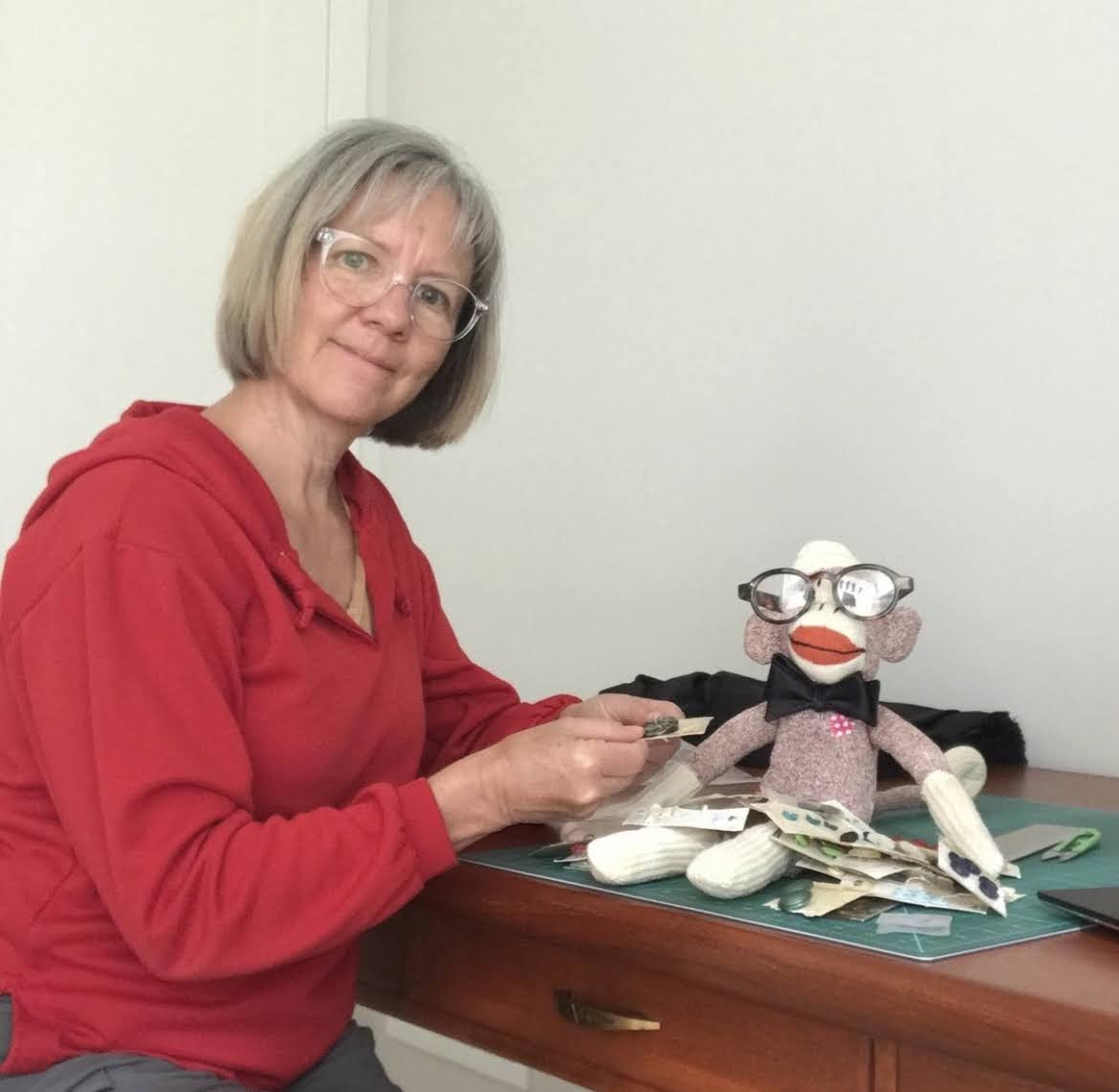

She focusses on slow fashion and good fit. Her mindful use of fabrics means she uses jersey scraps to create her iconic sock monkeys. They tend to run her Instagram account.
By following Tricia of Morrissews and Wendy whendy7, she found people who looked like her in the sewing world when she started to follow the SewOver50 hashtag.
Now SewOver50 and Mending Mayhem are her go-to information sources about Instagram.
You can follow Robyn on her blog and on Instagram.

Style and sewing
Friday 4 March 2022: Kate answers questions about her style and sewing preferences.
#Mendmarch 2022
Mending podcast guests in this episode are Katrine of Mending Mayhem, Go to Katrine’s podcast blog post to listen to all of her podcasts.
Selina of @Selinaam05 in Amsterdam podcast link,
Wendy of @Whendy7 in the UK podcast link
Tricia of @Morrissews also from the UK podcast link
Uli of @schneckstein in Germany podcast link
Friday 4 March 2022: Kate answers questions about her own style and sewing projects.
Friday 12 March 2021: From Kate Sekules – ‘Since we are all still stuck at home I especially loudly want to invite you to the #MendMarch party on Instagram.
In case you’re new to Instagram, this is a fun challenge in which we all mend together, every day in March each year, using the prompts / themes I just posted on my feed visiblemend. Also there’ll be reminders every week. There is never any pressure; just drop in when you’re feeling it. I promise shenanigans, friends, support, laughs, and one enormous dent in your mend pile. Check out the tag for previous -I recommend you look for Katrine’s; they are most fabulous and very silly. Swipe for a couple of old, and large, mends of mine, which I think debuted in a MendMarch past. Anyway, thank you massively Katrine for all the Mayhemmers (as it says on p.218 of MEND!) March is such a great month and mending is what we’ll enjoy together!
Friday 25 February 2022: Kate Sekules of Visiblemend is running #mendmarch. It’s 5 years old.

Thursday 23 December 2021: Katrine chats about how mending and craft energises her while living with Lupus, Dyslexia and ADHD.
Mending and always doing something with her hands helps her focus on everyday things like speaking to health services, teachers and even her neighbours.

Whendy7

Tuesday 7 December 2021: Wendy or Whendy7 was nominated to be on the podcast recently because she does some very creative mending.Whendy7 tells her story
Visible mending is a skill she is developing everyday. Her parents gave her the lifelong value to mend. Wendy tells a great story about how both her mother and father helped her save both her school skirt and her bike.

Wendy is inspired by the efficiency and cleverness of zero waste patterns. She particularly enjoys Liz Haywood’s patterns. Wendy sees Liz’s pattern like reading a good novel. She gets absorbed into the journey and enjoys each new insight or revelation as Liz reveals her new patterns on Instagram.

Mending Mayhem is such a fun group for Wendy and she thanks Tricia for introducing them to her. Katrine and Anette, who run it, exude enthusiasm and mending positivity. They celebrate all kinds of mending – even a snowmobile! The regular reappearance of Mr Mayhem’s jacket and jeans is a source of great fun and there is shared empathy for the never diminishing pile of sock mends that so many people have.

If Wendy has mending, she posts them for #mendingmayem and @evelyn_wood ‘s #mondaymending – even if it is very ‘boring’ – each week.

Thursday 18 November 2021: Katrine of Mending Mayhem shares her recent creator’s block experience to help listeners experiencing their own creator’s block to accept that this happens to all makers.


Friday 28 March 2021: Katrine is back to spread her knowledge of using applique to mend.
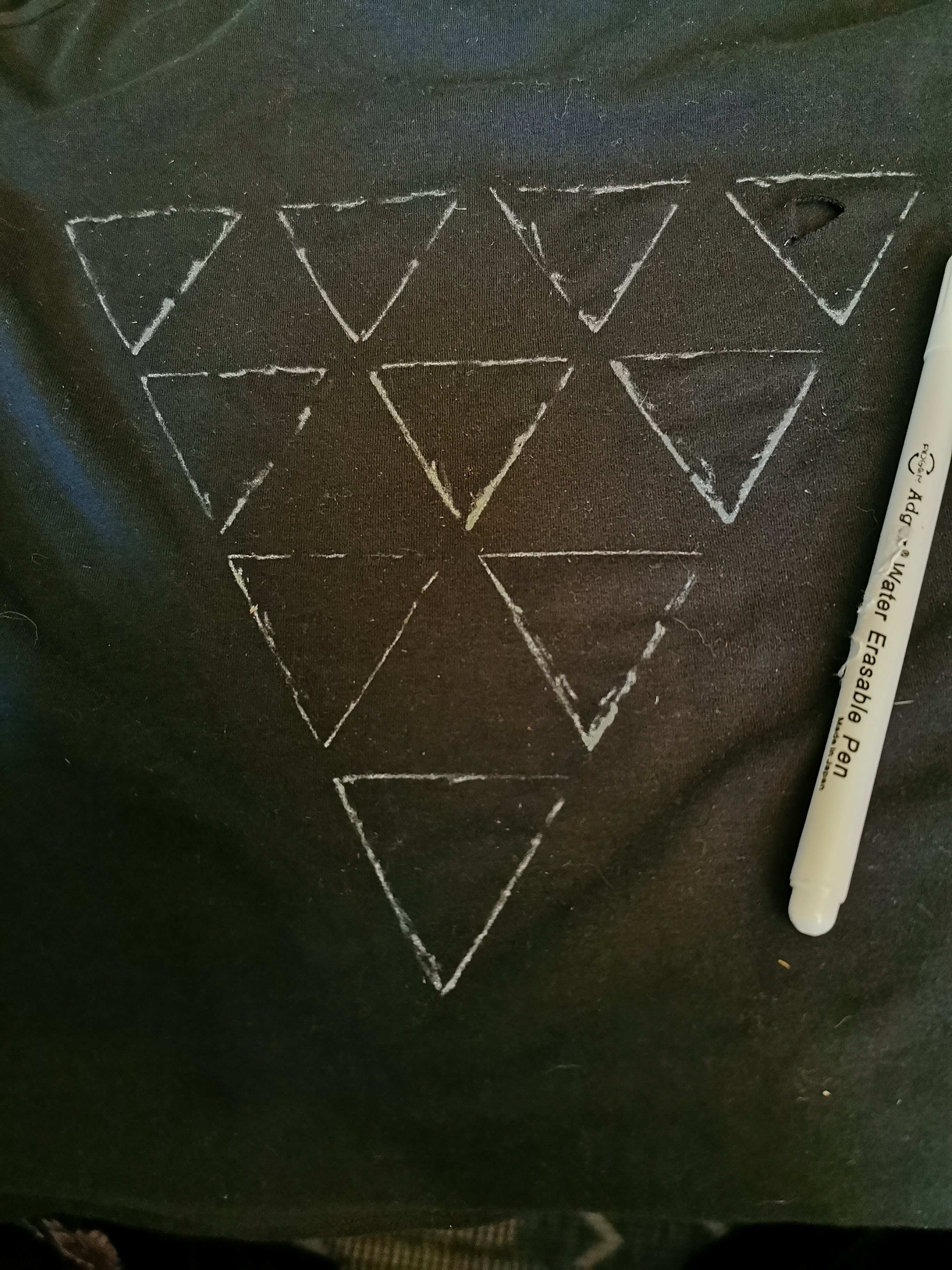






Friday 19 March 2021: Uli has agreed to replay her podcast in honour of #mendmarch. You’ll hear how her family background keeps Uli visible mending.

Friday 26 February 2021: Katrine of Mending Mayhem talks about her approach to #MendMarch, run by Kate Sekules or @visiblemend each year. We do mention one of our favourite mending friends, Tricia of Morrissews.

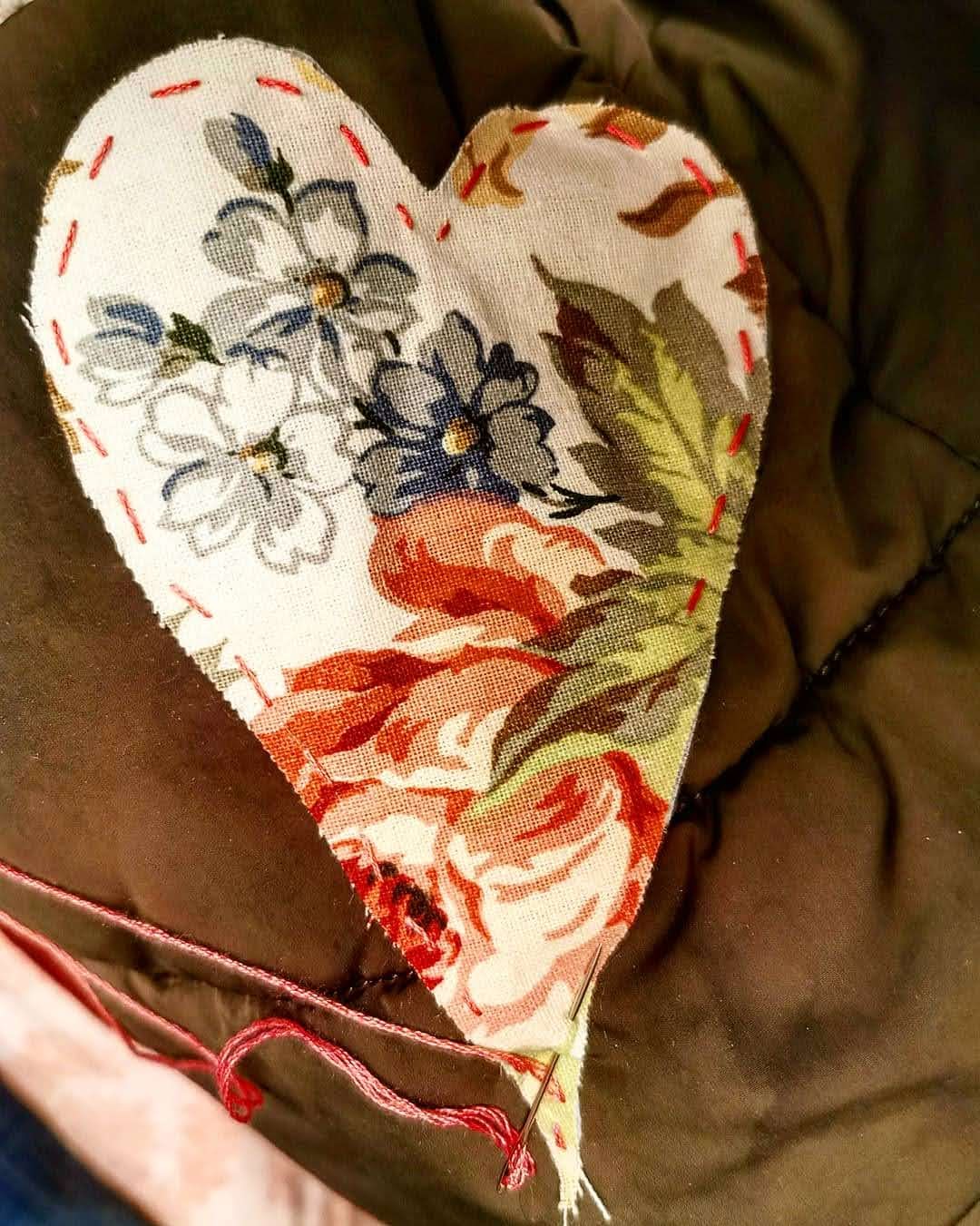



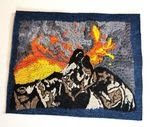
Everyone in Katrine’s family has some mending skills although she is the mending ‘go-to’ person. Her friends also provide Katrine with fabric and clothes to work with and mend.
Hopefully there are plenty of projects Katrine can post for #Mendmarch this year.
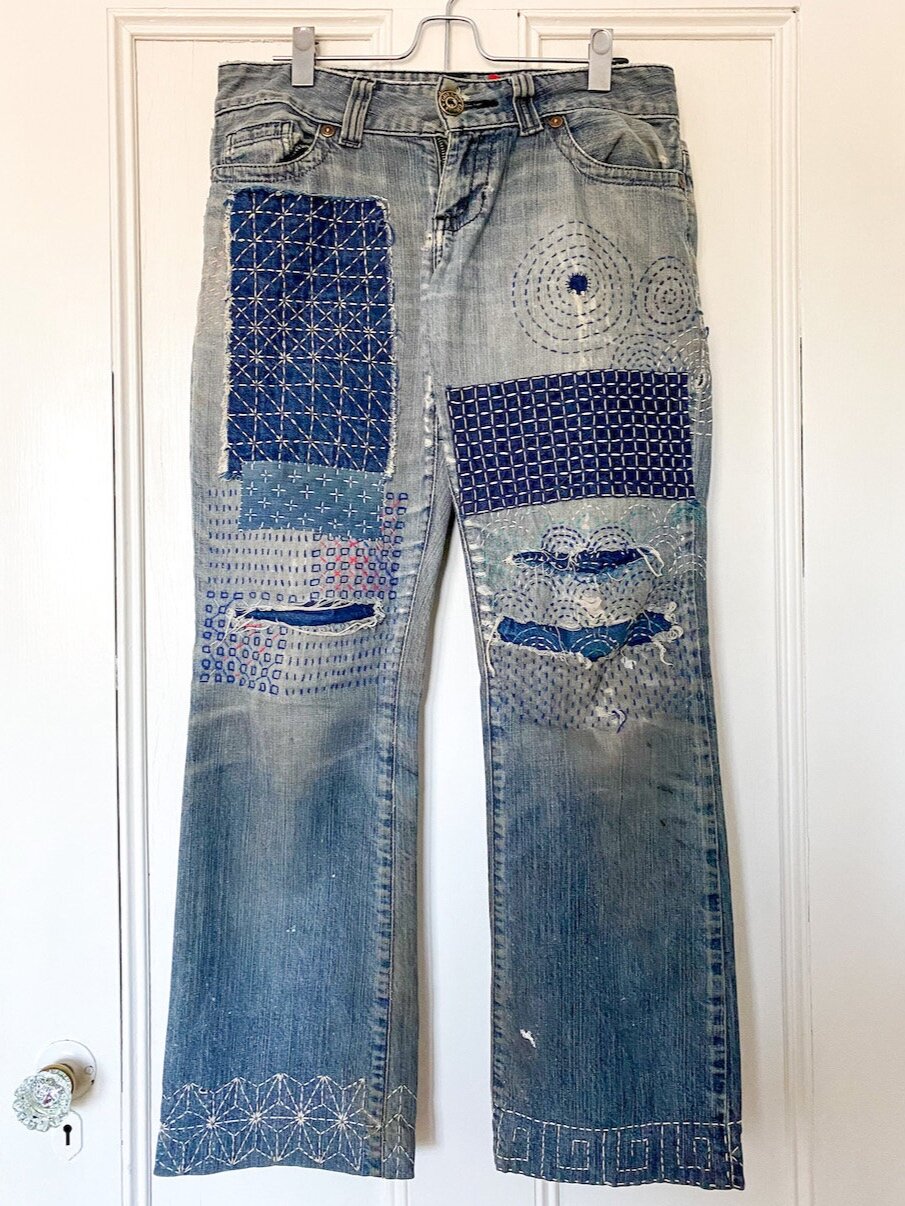
Friday 12 February 2021: This time Kate Ward delves into the research where time spent crafting and stitching has so many benefits for us. This podcasts covers her blog posts 10 reasons why stitching is good for us and 7 more reasons why stitching is good for us.
Friday 29 January 2021: Kate Ward is a multidisciplinary artist, working in jewellery, textiles, ceramics, video and installation. Kate’s work is often minimalist, focusing on form, colour and the interplay of contrasts. Her practice is inspired by the ephemeral, the metaphysical, the symbolic, and the relationship between art, ritual and culture.
In this podcast Kate tells us about her arts training and a few reasons why stitching is good for us. There are many more reasons why stitching is good for us.

Kate has a number of art degrees.

She first obtained a Bachelor of Visual Art from the Australian National University, Canberra, Australia in 1998. Went on to study a Masters in Arts Management and Policy from London University, UK in 2008. A Certificate in IV Ceramics from Goulburn’s TAFE, Australian 2012. And culminating with a Masters in Fine Arts at the Nova Scotia College for Art and Design, Halifax, Canada in 2016.

Kate has been the recipient of numerous international scholarships, residencies and exchange programs. Her work has been selected for national and international exhibitions, and won the Fibreart International Guild’s 2001 ‘Outstanding Work by an Emerging Artist’ award, Pittsburgh, USA. Her work is in private collections world wide.

Friday 22 January 2021: Lindsay (Lindzeanne) is an English literature teacher by day, self-taught hand-stitcher by night living in Tokyo Japan.

Growing up, Lindsay was always described as the “creative one”. She drew, painted, but never had the opportunities to take art classes or was able to consider art as a viable job, so she pocketed away my creativity and pursued practical things. It wasn’t until she was in her early twenties and desperately seeking a creative outlet that she began dabbling again, but Lindsay had no clear direction. Lindsay tried to teach herself to play the accordion, the banjo and the ukulele. She also started sewing her own clothes, and learnt to knit. Lindsay painted with watercolors as well.
For about ten years, Lindsay was rediscovering herself in an aimless way. It wasn’t until she joined Instagram and discovered the concept of textile art that the ten years of trying to find her own voice through her creative expression finally clarified into the realization that with something so small as needle, thread, and time, the possibilities were really endless.

Lindsay says, ‘Hand-stitching for me is the perfect marriage of a lot of what I hold dear. Through making my own clothes I came across the concept of slow fashion and mending. Moreover, living in Japan, I am inspired by Sashiko stitching and the concept of “mottainai” or “waste nothing”. In a fast fashion world, hand stitching is my own personal revolt. My work takes time, and that is ok. My work is made from second hand or recycled materials. And that is ok, too, because I don’t want to contribute to any more detritus in the world.’

‘Through my work I aim to take seemingly worthless things, especially textiles, and transform them into small tokens of beauty that can be enjoyed in everyday life.’

Tessa Perlow is one of the first second hand upcycling and motif influences on Lindsay.
Lindsay suggests that new starters should use what they have at hand. Machine thread is what she uses. The important thing is to start! You’ll find Lindsay on Instagram and on her website.
Wednesday 23 December 2020: In Katrine’s December Mending Mayhem podcast, we talked about Christmas in Norway. This post provides more details about how Norway celebrates Christmas.
Friday 4 December 2020: Katrine shares her mending knowledge and a special Christmas mending story.Crochet mending and Christmas mending story
Did you know crochet can be used as a mending technique?
I use it quite often. It can also be used to alter and mend clothes.
You can darn socks by using crochet. It’s easy if you already know how to crochet. I use single crochet stitch around the edges of the hole and keep working with this single crochet stitch into the middle until the hole is closed. That’s how easy it is.
You can do the same to crochet to close a hole too. If it’s not a knitted item such as socks, you might need to create a base for your crochet. You can use running stitches or blanket stitch. I prefer to use a running stitch along the edge as doesn’t show when you’ve finished your mending.
Crochet panel ideas
I have used this technique to create panels in clothes. One example was when I mended a sweater that I bought and it was much too short.
What I did was I cut it in the in two pieces and then crochet a panel and it now fit me better. You can crochet by either working back and forth or by crocheting go around each panel piece.
Once you’ve done this, attach both pieces as you go or join them in the middle. This middle join then becomes a lovely feature.
You can choose to create panels in the side as well. To do this you cut or unpick open up the side seams and create a base of running stitch. Use contrasting colours to create visible mend feature.
I have altered a few sweaters this way and I also made a jacket out of a hoodie.
My most fun alteration was a pair of ugly crocs that I covered with crochet.
And they turned into cool slippers with flowers. These are now lovely to look at too.
For more crochet hack inspiration check out Emma’s account @steelandstitch Emma has even wrote a book about crochet Books | steel and stitch
Where I love to use crochet
As I seem to have longer arms than the ‘average’ mender I often make the sleeves longer by adding a little crochet feature to them.
You can also make crochet motifs and use them as patches. I like to also use small crochet flowers to cover small stains or holes.
Like the ones used for one of my favourite tops
I made a pattern for this on the Mending Mayhem blog.
Granny Squares also makes great patches.
And you can crochet together several to make bigger patches. These are also great if you have some left-over yarn you want to use and don’t want to waste. I also make other small motifs or doilies and use them as patches. Remember to choose a yarn that will work well with your fabric, because if you choose one that is too bulky or it might be too heavy for your fabric, and it will not look good. It won’t blend into your garment, unless you are aiming to have a mend that is very, very visible.
I think crochet patches fit well with jeans. They stand out really well.
I used a variegated cotton thread to crochet some granny squares to cover up some paint stains on Hilma’s jeans.
As I said earlier, you can make bigger patches by joining them together. I made a bigger patch out of 6 granny squares.
There is a jeans jacket I bought second-hand. I made a crochet panel in the sides as it was a bit too small for me but I loved this jacket so much. I planned to add some embroidery on the back of this jeans jacket, but haven’t gotten around to do it as yet.
If you don’t know how to crochet, you can often find crochet doilies in the second hand store and use those to create beautiful visible mends.
Here is my Christmas table cloth story
Here is a little Christmas inspired mending for the December episode of @seworganisedstyle podcast.
I have this huge Christmas tablecloth. My mother-in-law started embroidering it together with her husband. They did not finish their embroidery, and she passed it on to me, so I could finish it.
This was way back when I was in my early twenties.
Unfortunately there was a needle that was left in the embroidery of this tablecloth. The needle had rusted an was stuck in the middle of the table loth. So I couldn’t get it out without making a hole in the tablecloth. I can’t remember exactly how this happened but the area around the needle was also damaged. Maybe the needle was pulled through the fabric several times? And it grew bigger as I was embroidering. Why didn’t I think about fixing the hole when I first saw it?
It was of course very annoying to me because I then had spent so much time sewing it.
And I got all family members to embroidery a star each.
So after all of their efforts I thought to myself that ‘I must fix it’.
I wasn’t as experienced with mending back then as I am today.
And I used an under patch and darned it with the sewing machine 🙊 I did not have a similar thread at the time, and I sewed over this hole too many times. It really is not very pretty. I wish I had asked my Mum to help me out back then. But this mending kept this hole from growing larger and this has kept the tablecloth together for ever since.
I have recently covered that ugly darn with a crochet doily and a Christmas flower.
Every year when I used to iron this Christmas tablecloth and used to think ‘oh bugger I forgot to fix this ugly darn’. But right now I don’t have the time to fix this tablecloth……. So I’ll do it next year.
So I said to Maria @velosews I’ll make do this mend for the December podcast.
I must say I do regret it 🤣🤣🤣
This mend has given me a lot of trouble, and headaches.
First off all I had to remove my old darning, and this wasn’t easy to do. As I had to try to not have the fabric fray even more around the hole. But this stage of the darn worked out pretty well.
I then thought to try to darn the holes to look pretty by hand darning or maybe cut out the damaged area and put a crochet doily in the middle.
I was trying to find a thread to match the linen fabric, but after been through my entire stash, which is actually more like a craft store, I couldn’t find any. I tried with the closest thread I could find, but I didn’t like how it turned out.
Next I tried to find linen fabric that was somewhat similar to the one in the table cloth. Again, no such luck either. Yes. I even tried to bleach one linen piece to see if it was a better match with this tablecloth.
I kept searching through my other tablecloths to try to find something that could work out. But no, nothing matched up with this one.
Then I tried to find a crochet doily that could fit this hole in the tablecloth.
Either the ones I had were too big or wasn’t good enough for a centre piece of this tablecloth.
I looked through my local second-hand shops, no luck there either….
I had given up on finding something that would work the way I had thought. Deciding to crochet a piece myself. And I started a piece. But I’m not really happy with the pattern I chose.
I spent most of November trying to get something to work with the tablecloth mend. Thinking I just had to say to Maria I couldn’t fix it. Or I just had to go with a patch that didn’t fit and just trying to embroidery over it to cover up it didn’t fit. I really wanted this to be as invisible as possible.
But then looking for something else in the second-hand store, I stumbled upon a tiny tablecloth with a close colour and a little embroidery that I thought would work.
It was the best match I had found, so I went with it!
First I made a paper piece checking where it was placed, and how big this darn needed to be.
There was no room for mistakes, as I only had the one small tablecloth to use.
Then I cut the patch using the paper template. Zigzagging around the edges.
Flooded in the edges as I don’t want the rest of the holes to fray more I used thermofix. It’s a backing with glue on both sides. Often I use this in applique. You iron it on. When my patch was in place I topstitch the patch. And now my large tablecloth is finally ready for Christmas.
It just took me almost 30 years to get it done properly…
After I was done I got an explanation from my friend why it was so difficult to find a matching fabric or thread for the table cloth. She told me that they often used flour sacks to embroidery on quite some time after the second World War.
I think that might be the case, my husband can still remember his mum embroidery on it just before Christmas. He said he think it was passed on to her from someone, and she might had started it before he was born.
I’m very pleased I finally managed to get this done. All thanks to Maria and sew organised style podcast
Friday 6 November 2020: Katrine of Mending Mayhem discusses 4 mending techniques and refers to great menders across the globe.

Here is the transcript of her podcast:
Today we are looking at 4 different mending techniques – Sashiko, embroidery, sewing patches and applique. Visible mending is a fun creative way to preserve clothes. There are so many fun techniques to choose from. Mend don’t spend.
Sashiko
Sashiko is an old Japanese way of decorating and mending clothes. Sashiko means little stabs.
From what I have learned, Sashiko seems to refer to the stitching process itself, whilst Boro is the final textile result of patching and repetitive Sashiko stitching. Together they form a unique textile visible mending art piece.
Most people I know creating visible mending know more about Sashiko than I do. You can find Sashiko used in many forms from the simple running stitches back and forth through a patch, to intricate patterns.
Common motifs were originally inspired by natural surroundings like ocean waves, mountain peaks, and fields of grass-resulting in concentric circles and geometric patterns with poetic names such as persimmon flower or pine bark.
Simple tools are used – a long needle, heavy weight cotton thread, and a Sashiko thimble.
To avoid any discussions about how my work follows or doesn’t follow the traditional techniques and tools, I always say my mending is Sashiko-inspired. After all I’m a maker and an artist so I may not following rules as a true Sashiko expert. And I like to use whatever I have at hand. To be honest I have never owned any Sashiko threads or thimbles. And I’m horrible in sewing straight lines but I am very talented in making uneven stitches and I often cheat a bit too. Luckily there are some people that are way better with Sashiko than me and I enjoy seeing their work.
Mending Mayhem Collage on Wednesday 4 November 2020
My hardest task each week is choosing who to feature in the Wednesday Mendingmayhem collage. It’s difficult because there is so much good work on Instagram and on blogs.
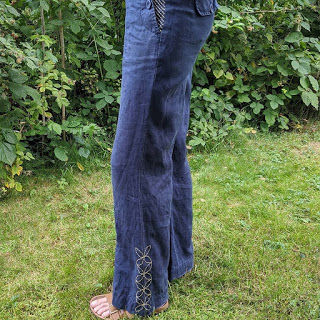

Kirsty from @spiderweavestudio Who was guesting for Mendingmayhem back in October is making some beautiful Sashiko mending.
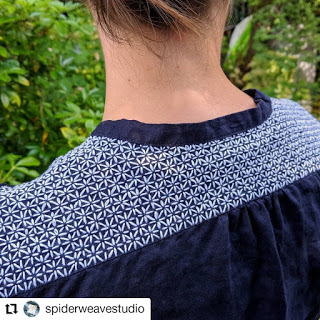
Selina from @selinaam05 shares traditional Sashiko knowledge. She will be coming on to the podcast this month too.
Friday 13 November 2020: This month’s mending guest for Mending Mayhem is Selina. It is a bit silly how I created the name: everything was taken for Selina, so I added “am” (Amsterdam); it was also taken, at the end I added “05” because 5 is my favourite number😉
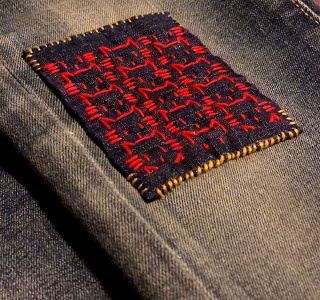
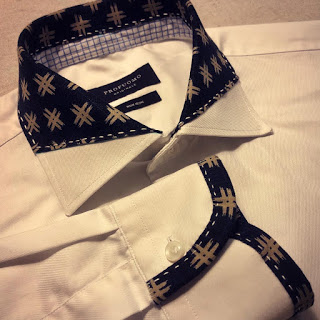
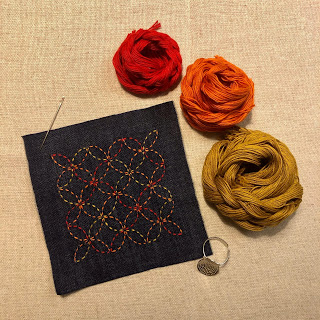
She also found inspiration from Lindsay @lindzeanne. Very talented textile artist living in Japan . Lindsay uses sashiko inspired work in her art using recycled materials and actually one of the first guest post at Mendigmayhem . She has a lot of impressive work, and some handstitched beads that are totally amazing.
Also, I would like to mention Eva Kittelsen from @myvisiblemend you will find her earlier work over at @Evakittelsen Norwegian textile artist who uses a bit of Sashiko in her mending.

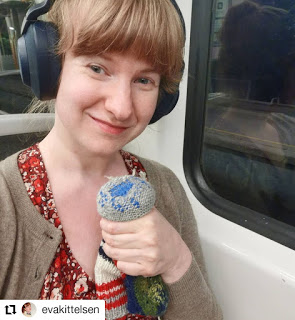

Isn’t this brilliant!
Eva also has a lot of gorgeous and breath-taking embroidery mends. Caring a lot about sustainability and the environment. Aso she does mend in public. It’s a great way to get people interested in the mending movement.
Embroidery
Embroidery has existed, in many forms, in every population across the globe. Whether it’s displayed on clothing, home goods, or as an artwork, embroidery is a timeless craft and is an essential part of our material culture.
The definition of embroidery is the art of applying decorative designs onto fabric using a needle.
Menders often use embroidery to cover up a hole or hide stains or simply to embellish their work. There are a lot of different stitches to choose from and so many ways to use it. I seem to have been using embroidery many times recently. I used to prefer to use my sewing machine for mending, as it’s much faster. Now I have found myself enjoying hand stitching more and more. It’s something about the quietness and the slow process that makes you unwind and relaxed.
What tools you need to embroidery mend?
Needle
Embroidery thread – Cotton or wool depending on what material you are mending.
A pair of embroidery scissors
An embroidery hoop can be helpful
If you are making a pattern or design you might need a tailor’s chalk pencil or a transfer paper.
Beads or sequins can be added for more decoration.
I like to make embroidery patches and sew them on after I’m done with the motif often using running stitches creating a Sashiko like pattern.

Since I used to make a lot of jewellery in the past, I tend to use beads in some of my embroidery because I still have a lot of them and they do look good on some garments. Like the sweater I’m still working on for my Mum. You have to make sure to attach the beads securely. I use a double sewing thread, and small stitches.
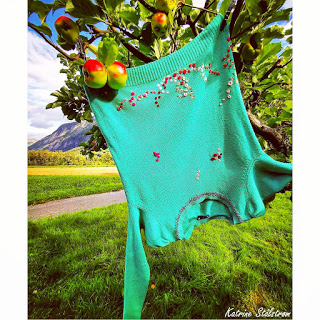

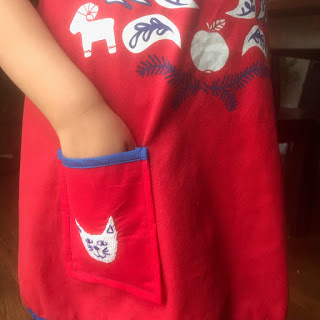

Techniques are often used mixed when you create visible mending. The techniques are all determined by the artist. I might have mentioned the sisters Jen and Wendy from @bostonandyork earlier, but they are defiantly worth mentioning again as they have so many brilliant stitching tutorials on their profile. And a lot of beautiful mending and embroidery.




Vera from @reparierenistliebe mostly use embroidery in her mending and she does it very well. Inger from @ingerfrimodig also has a bit of embroidery work, even a pair of garden gloves.


Patching

Patching could simply be placing a patch to cover a hole. You can apply the patch either on the inside of the garment or outside. There are many ways to use a patch. You can make it stand out or try to make it almost invisible. I think most people will be familiar to patching a hole. And it might sound a bit dull.
What tools you will need to patch a hole?
Needle
Sewing thread or embroidery thread
Scissors
Or a sewing machine if you prefer.
Patches from fabric, you can use other worn-out clothes to make patches.
A few pins to secure the patch in the right place.
Fusible interfacing
I do recommend the patch fabric is somewhat similar to the fabric in your garment.
The patch needs to be bigger than the hole, and sometimes there will be weak areas around the hole so you might want to make a much larger patch to prevent a new holes to emerge.
Remember, you will need to secure the edges of your patch before attaching it. This can be done using zig-zag stitches using a sewing machine or use fusible interfacing or you can fold in the edges of the hole.
Sewing by hand you can use blanket stitch around the edges. This can be done while sewing the patch onto the garment.
Some fabric won’t fray for example knit fabric don’t fray easily and so you don’t need to secure edges for holes in knit fabrics.
Patch sewing tips
Pin the patch in place and start sewing it on. Either by hand or machine.
Often jeans and trousers will get a hole in the knee and it’s difficult to get to by using your sewing machine. A good tip is to open the side seem a bit to get better access, then sew it back when you are done.
Another good tip is to use motifs from old clothes as a patch. Children often have favourites and then they grow out of their clothes. And they do often appreciate having their clothe patched with their outgrown garments.

Talking about patching we must mention Erin from @gatherwhatspills who hosted the #mendmakefriends patch swap and uses a lot of patches in her mending

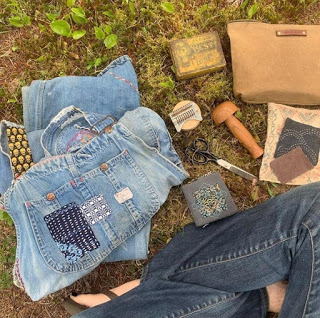
Marte form @marte.unikumdesigen often uses worn out or outgrown clothes for patches and also Hanne from @bananasandgreen
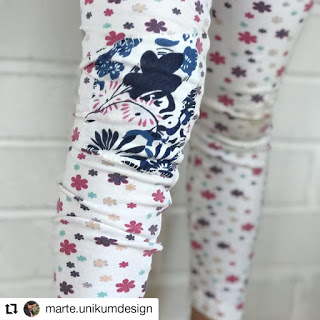


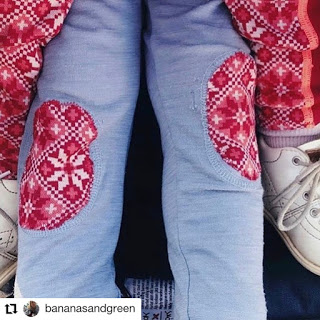
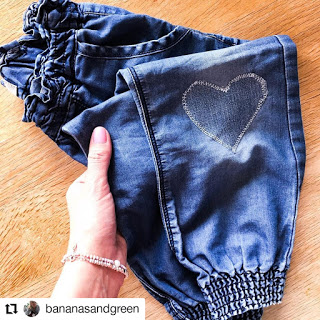
Candy @heartfulstitches is very often also using patches, and likes to attach pockets to everything. You can’t mention Candy without talking about her marvellous post stamp quilt. #candyspoststampquilt Hand stitched from tiny pieces of fabric, embroidery quotes from her children, family sayings, memories, jokes, songs and drawings. Last time I checked it had around 3,350 pieces.


Marissa from @andwearis often makes a little applique from some of her patches. That girl seems to be able to reuse anything.

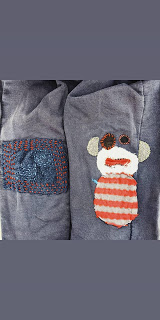
Applique
Applique is a technique where pieces of material are attached to a larger piece of material, often in a decorative pattern. These patterns can include lettering, geometric shapes, or images. Often, the two materials used will contrast in type, colour, and/or texture so that they can be easily differentiated.
Common applique fabrics include felt, fleece, and quilting cotton, but applique can be accomplished with almost any material! Applique is often used to add colour, texture, or embellishment to a piece. This is a very fun technique and you can make almost anything you like.
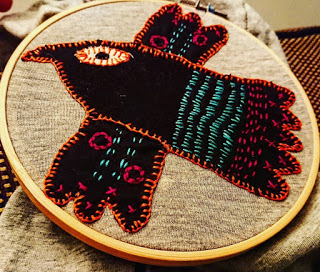
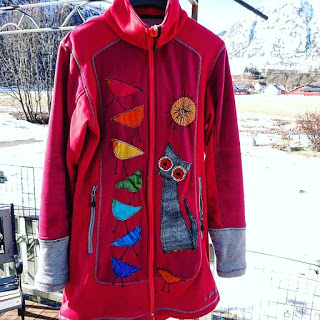
I used to create appliques when I first started to mend, but not so much lately, I think I need to revisit this technique again. You can use applique directly on your mending project or make a patch with it first.

I think it’s a good way to mend t-shirt or leggings’ where you don’t need any backing on the fabric pieces. This techniques does need a bit of work if you are cutting out small pieces and iron on interfacing. The motif can be sewn on by hand or machine
Stephanie from @swoodsonsays uses a lot of applique in her mending. Making unique pieces of garment that is often better than the original.
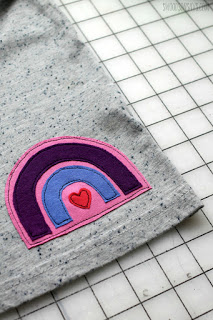

You also have the reversed applique technique there you put a piece of fabric underneath, draw a motif on the top stitching around and cut out the top fabric. It can be a bit tricky to use for mending as the motif must fit the hole or stain. And it works better with t-shirt fabric or non-fraying fabric.


I have used it for mending leggings and t-shirts.

Friday 9 October 2020: Katrine of Mending Mayhem provides her tips for buying second hand notions and fabric. You’ll save money and lessen the impact on the environment.



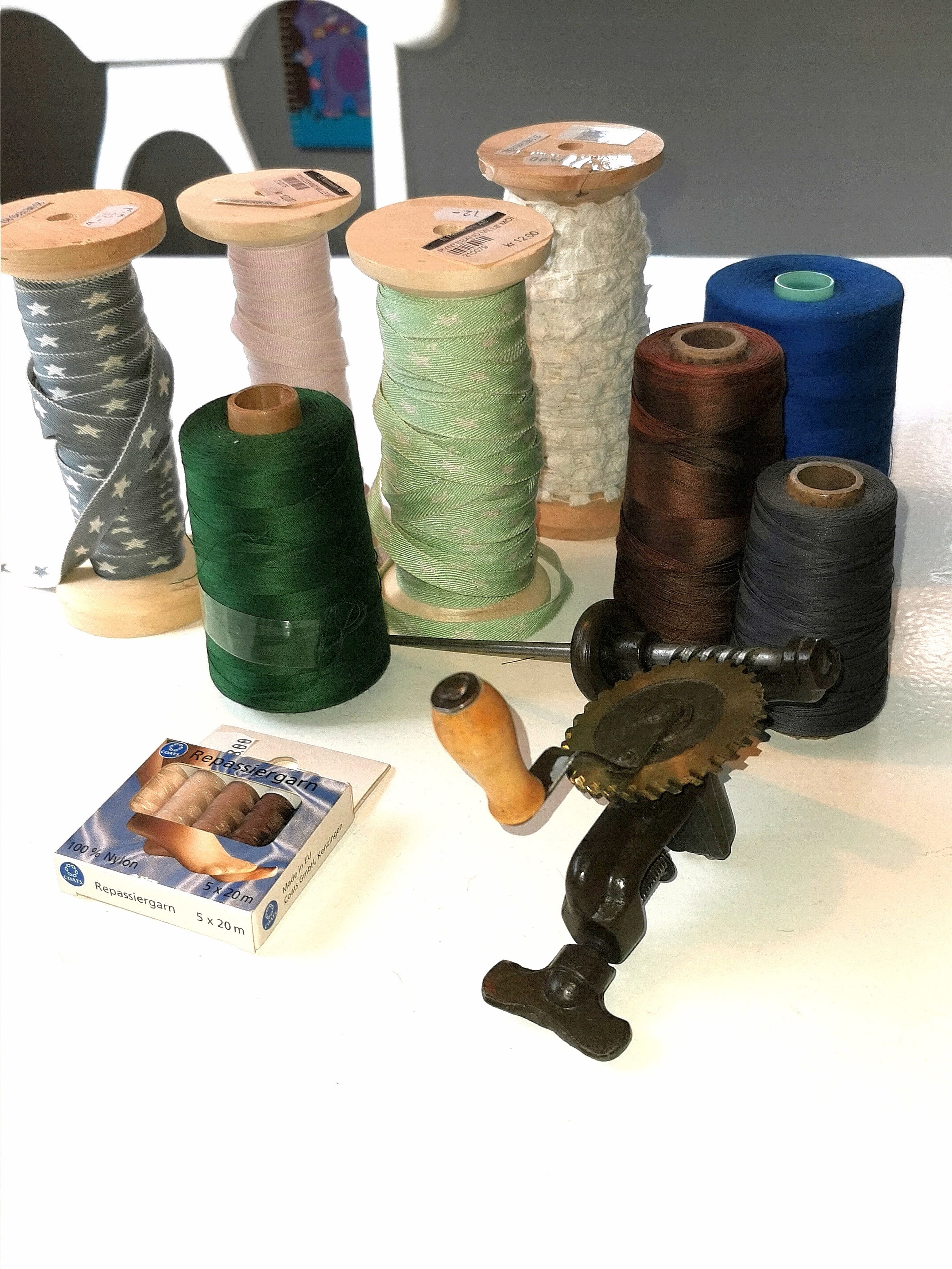



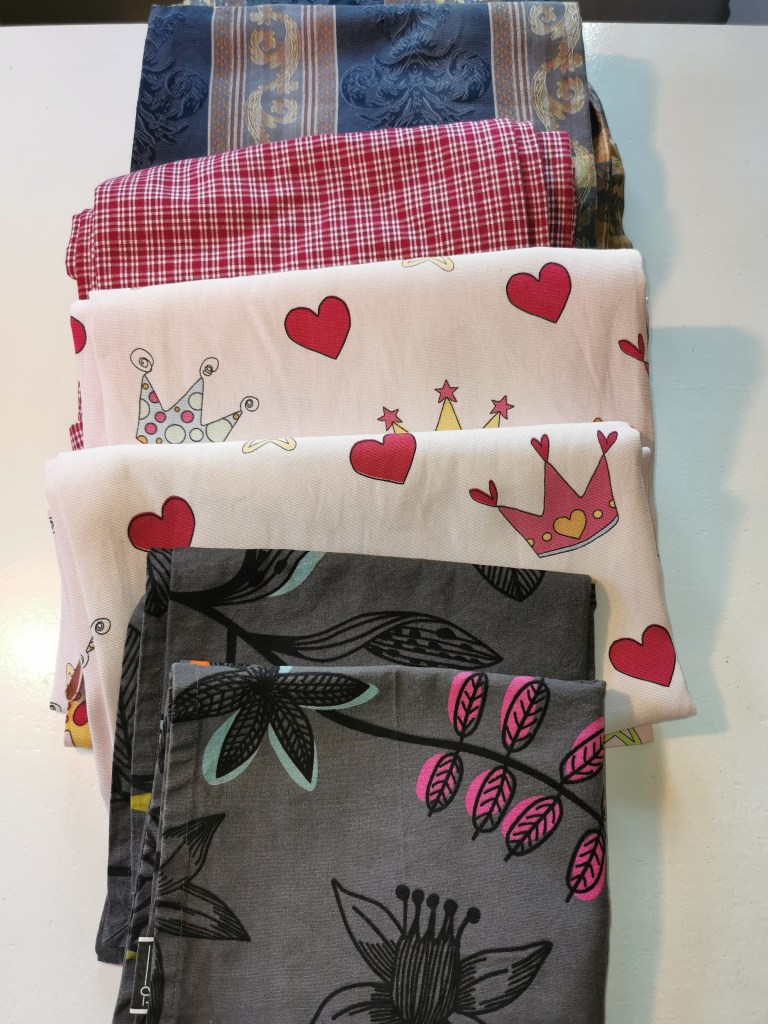
Friday 18 September 2020: Katrine of Mending Mayhem is back from her Summer break. Katrine discusses this week’s visible mending collage and the basics of mending.
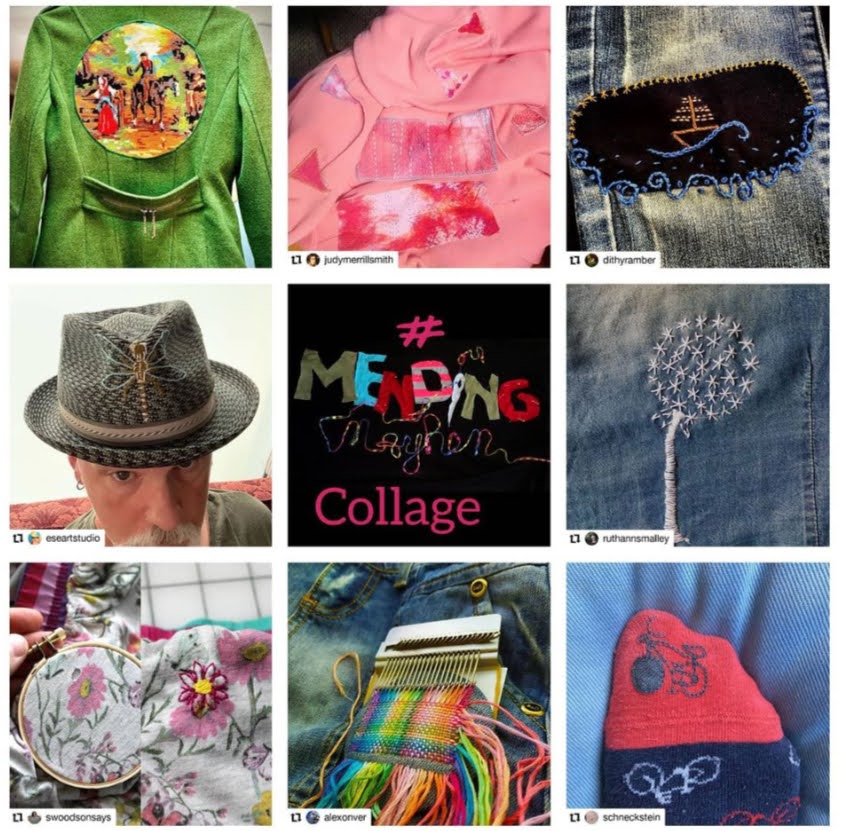
Use our #mendingmayhem and your mending have a chance to be featured next week.
Here are the Mending Mayhemmers for 16 September 2020:
🧵@lorenz.cherry for amazing and well done tapestry circle on the back of a coat 🧥 ⭕❤️
🧵@judymerrillsmith for a much patched hoodie, it’s just gorgeous Judy 💕 😍
🧵@dithyramber for making waves with a sailboat ⛵ mend on jeans 👖 it’s such a brilliant mend Heather 👏 ❤️
🧵@eseartstudio Eric always comes up with creative solutions. We just love the dragonfly keeping your much loved hat together 🎩❤️
🧵@ruthannsmalley mending the back of a denim shirt 👚 with a gorgeous dandelion ❤️nice stitching Ruth 👌❤️
🧵@swoodsonsays despite her love for patches Stephanie went for a embroidery mend this time. We love your flower 🌸, good choice 👏❤️
🧵@alexonver for very colourful and fresh darning denim 🌈❤️you work with the darning loom is amazing Alex 👌
🧵@schneckstein Uli are impressing us with her beautiful bike 🚲 mend on socks 🧦 ❤️
Well done everyone 🎉💫🎉
Thank you all for using our #mendingmayhem and for contributing to the mending community ❤️
Keep up the good work.
Darning is an easy skill to get your mending skills started. Here are darning techniques supplied by Katrine.




The pictures above show how the darning loom is used. Roberta Cummings has a very good tutorial in her Instagram highlights


Other types include Pick up stitches for knit fabrics, Scottish darning, Finnish darning and Japanese stitches.
Darning tools: These are your easy to find tools- Darning needles, blended threads, darning mushroom and access to darning tutorials.
Katrine’s darning tip: Katrine suggests that when you’re darning wool fabrics, use a blended yarn to ensure your darning lasts longer.
This is a link to a Scottish darning technique by Marlene Meiners @milli_and_the_bee She also has a link to Swiss darning technique and Duplicate stitch. Thank you for your permission to link to your darning tutorial Marlene.

Sewing Save Series: Part 2 with Katrine and Suzie is about mending and cherishing memories. The mending examples that Katrine and Suzie discussed in part 2, clearly link mending to wonderful memories. Making sure we avoid adding to landfill is top of mind when mending but the mending driving force for Katrine is all about saving wonderful memories.
Every item has more than one life and mending is an everyday part of their lives.
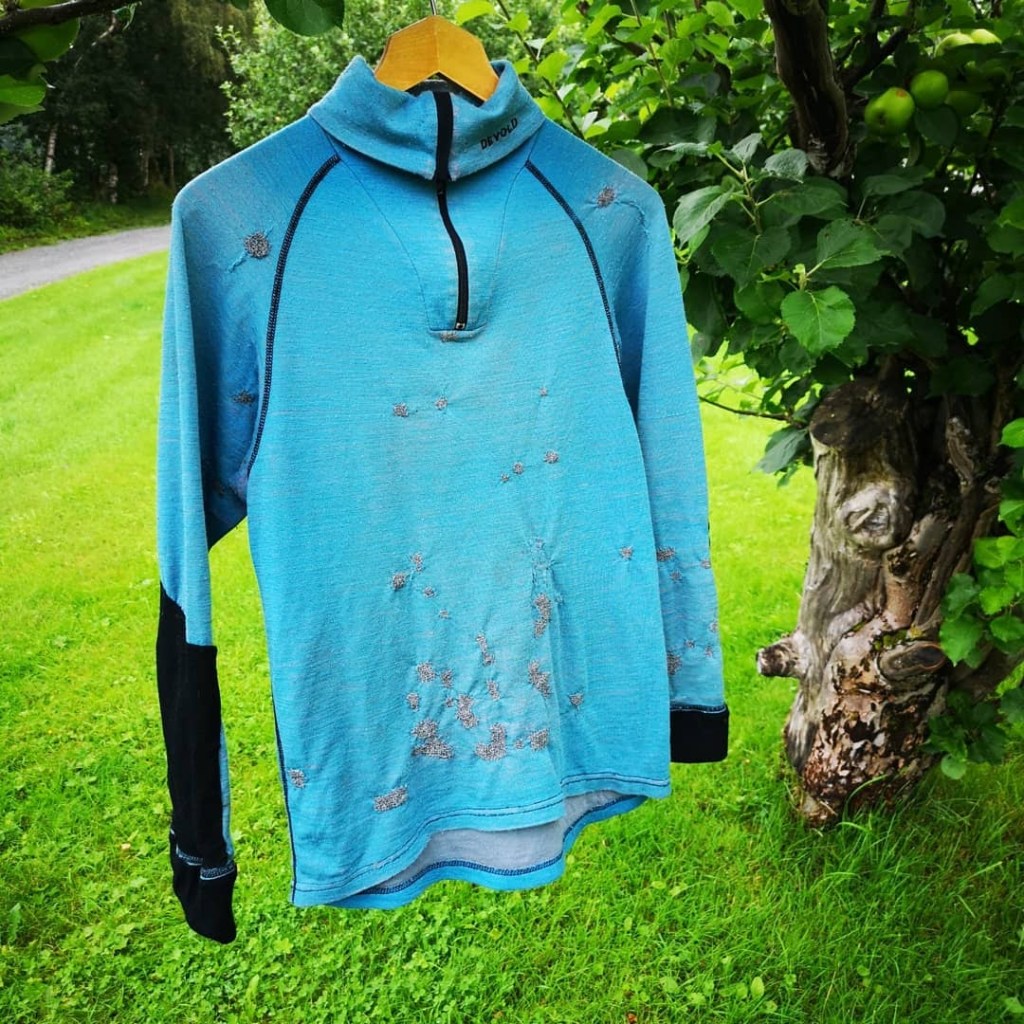


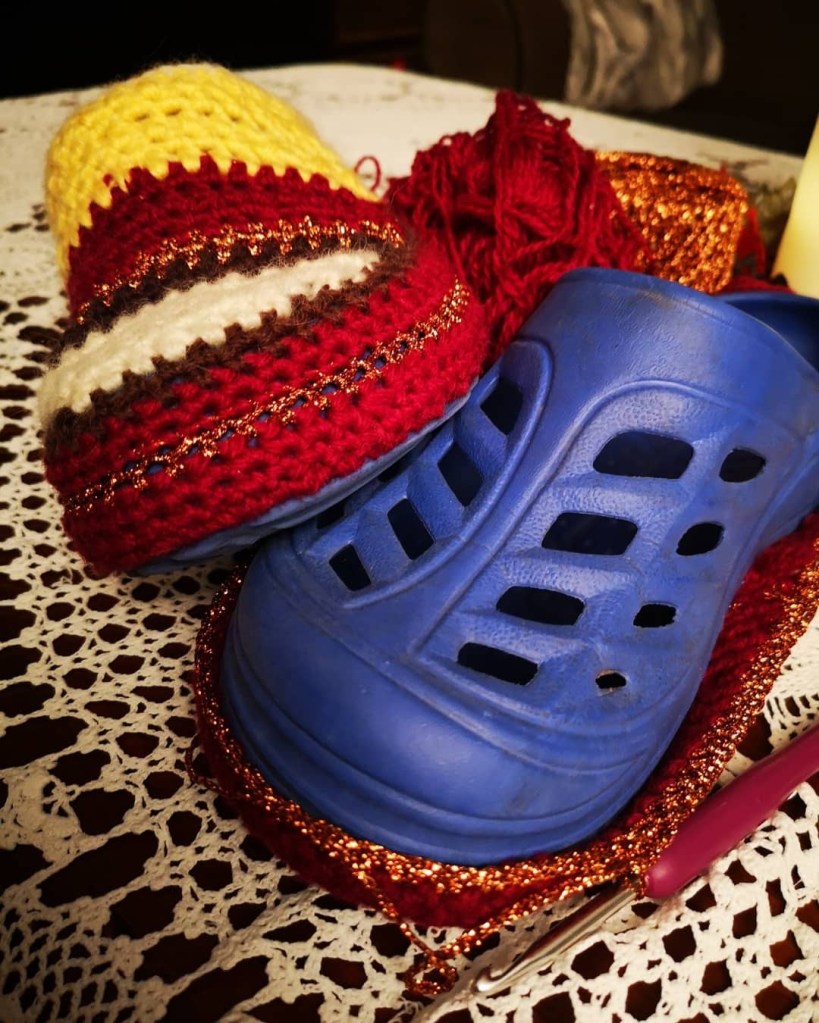








The visible mending movement has over 76,000 IG posts. Mend March is another great hashtag to follow.
‘Mend don’t spend’
















An important aspect of mending is that you can’t go wrong with visible mending. There is no right or wrong way to mend visibly. Visible mending is all about what you like, or want, or how you want to give new life to your clothing/shoes/accessories.
Visible mending is achievable for everyone. You don’t have to be skilled in a craft. You do need to be creative but again, that’s your personal preference and when you follow Mending Mayhem, or any mending hashtag, you can find many mending options to choose from for your needs.
Evelyn Woods is a big supporter of Monday Mending. Wednesday collage of mending from the previous week and a guest post on a Friday. Button swap was a huge hit this year. Morrissews or Tricia has helped Katrine and Suzie run the A to Z of mending.
Over 4,000 Instagram followers agree Mending Mayhem is a fun and friendly mending community. And you can follow mending community on the Mending Mayhem group on Facebook and the Mending Mayhem blog. Katrine also posts her mending projects on their personal Instagram accounts. Katrine posts on her blog as well. Mending Mayhem were mentioned in a news article about mending in The Guardian.

[…] over to the Mending Mayhem podcast post for great darning […]
LikeLike
Avery interesting
LikeLike
[…] 13 November 2020: This month’s mending guest for Mending Mayhem is Selina. It is a bit silly how I created the name: everything was taken for Selina, so I […]
LikeLike
[…] 13 November 2020: This month’s mending guest for Mending Mayhem is Selina. It is a bit silly how I created the name: everything was taken for Selina, so I […]
LikeLike
[…] podcast guests in this episode are Katrine of Mending Mayhem, Go to Katrine’s podcast blog post to listen to all of her […]
LikeLike
[…] a look at previous podcasts by Katrine of Mending Mayhem, as she’s one of the textile artists in 2022 Making Zen Online […]
LikeLike
[…] a look at previous podcasts by Katrine of Mending Mayhem, as she’s one of the textile artists in 2022 Making Zen Online Retreat. Her topic is […]
LikeLike
What an amazing and enjoyable informative read, your contribution is appreciable. Keep up the good work!
Bee Embroidery Design
LikeLike
Thank you for your support. Katrine and all the mending people who have been on the podcast are very talented and are mindful about the resources they use.
LikeLike